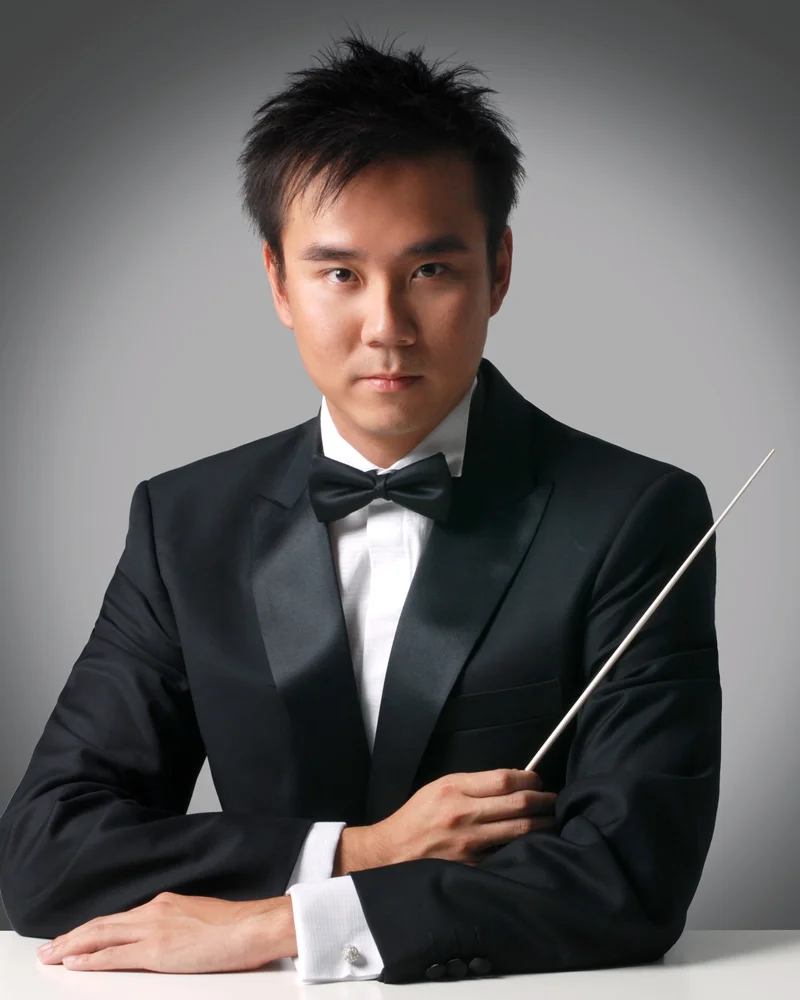New England Philharmonic serves up dances, old and new, in a program of premieres
Tianhui Ng led the New England Philharmonic (NEP) through a complex yet intriguing series of world premieres and symphonic dances Saturday night at Jordan Hall. This program juxtaposed contemporary and established composers in an audacious yet successful fashion.
Ellen Taaffe Zwilich’s brief Thank You Notes for Richard Pittman, written to honor NEP’s music director emeritus, was debuted at this concert.
Zwilich developed a unique musical style that can be described as neo-tonal with jazz rhythms through frequent use of percussion. Culminating in an almost militaristic note, this eloquent piece only leaves the question about the character of the thank-you note.
Ramal by Syrian-American composer Kareem Roustom was heard in its Boston premiere. Commissioned by Daniel Barenboim in 2018 for the West-Eastern Divan Orchestra, this rhythmic and well-orchestrated piece has been performed around the world.
The themes of Roustom’s works often center on war and instability, and he intended Ramal as a metaphor for the Syrian war, which has unfortunately not reached its end. The structural framework of Ramal, one of the 16 meters in pre-Islamic Arabic poetry, was illustrated in this colorful and appealing composition.
Starting with muted strings, the composer builds a structure that progresses from threatening brass, to a wave of violin melody and glass harmonica, crashes in the middle of the piece and comes together after multiple glissandi in the strings, culminating in a blazing horn finish.
Elijah Daniel Smith’s Wraith Weight was the winner of NEP’s 2022 Call for Scores. The composer had studied at Boston Conservatory College and was inspired by different art forms.
In Wraith Weight he takes photography and videography as an inspiration and attempts to represent the clarity of visual arts as represented by rhythmical piano and percussion. Smith then paints a contrast via blurry opaqueness with strings, woodwinds and brass playing glissando. He combines these two extremes in a rhythmically fluent piece.
Composer, conductor, writer, and pianist Matthew Aucoin’s Two Dances received its Boston premiere in the orchestral arrangement. This was a baroque dance piece reminiscent of jazzy Irish folk dances on violins going “off the rails.” The opening “Shaker Dance” displayed angular moves, and the “California Dance” lifts off after the violin cadenza.
Violinists Danielle Maddon and Keir GoGwilt nicely intonated the Steve Reich-esque style and were well supported by rhythmic and melodic orchestra interjections. Unlike typical dances, it also had meditative moments with melancholic violin and orchestra moments. The rhythmical ending challenged the orchestra, which was not always together but the piece proved engaging.
Aucoin linked different genres and eras well and provided a link to Sergei Rachmaninoff’s Symphonic Dances, which concluded the program and marked the Russian composer’s 150th birthday year. (The Boston Symphony Orchestra was playing the same work simultaneously Saturday night.)
Rachmaninoff’s final work for orchestra shows his later style with curious, shifting harmonies (exemplified by the use of the alto saxophone in the opening dance) cast in a less sumptuous sonority that also reminds of Prokofiev, especially in the outer movements.
The first movement opens with a march and then quotes motifs characteristic of Russian church music with bell-like sounds; in the following staccato chords, the music combines energetic rhythmic sections, similar to Rimsky-Korsakov.
Amid its energetic sections, there are waltz-like rhythms, as in Shostakovich’s Jazz Suites, but with heightened vivacity in the middle movement. The piece sums up the career of Rachmaninoff as a composer, with the composer almost nostalgically longing for the music of a Russia he once knew.
Woodwinds and brass were not always perfectly in tune nor together. That apart, Ng, the NEP’s new music director, led them confidently with a clear podium technique. The orchestra can be commended for a largely successful performances of a challenging program.
Stephanie Oestreich is a biotechnology executive with experience in the pharmaceutical and biotechnology industry, and a Ph.D. in biochemistry and MPA from Harvard.
She is also a semi-professional violinist, and has performed with orchestras in Carnegie Hall and other international venues.
Posted in Performances



